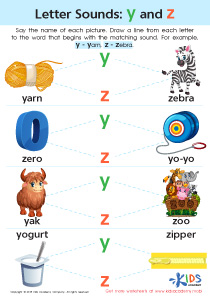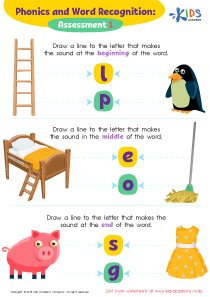Normal Ending Sounds Worksheets for Ages 3-9
5 filtered results
-
From - To
Discover our engaging collection of Normal Ending Sounds Worksheets, designed specifically for children aged 3-9. Our printable activities make learning fun and interactive, helping young learners to develop essential phonics skills. Each worksheet introduces common ending sounds, aiding in recognizing and pronouncing final sounds in words. Perfect for parents and teachers, these resources aim to boost early reading and spelling abilities. From simple matching exercises to advanced sound recognition tasks, our worksheets cater to various skill levels and learning paces, ensuring every child progresses confidently. Visit us to enhance your child's phonics journey today!
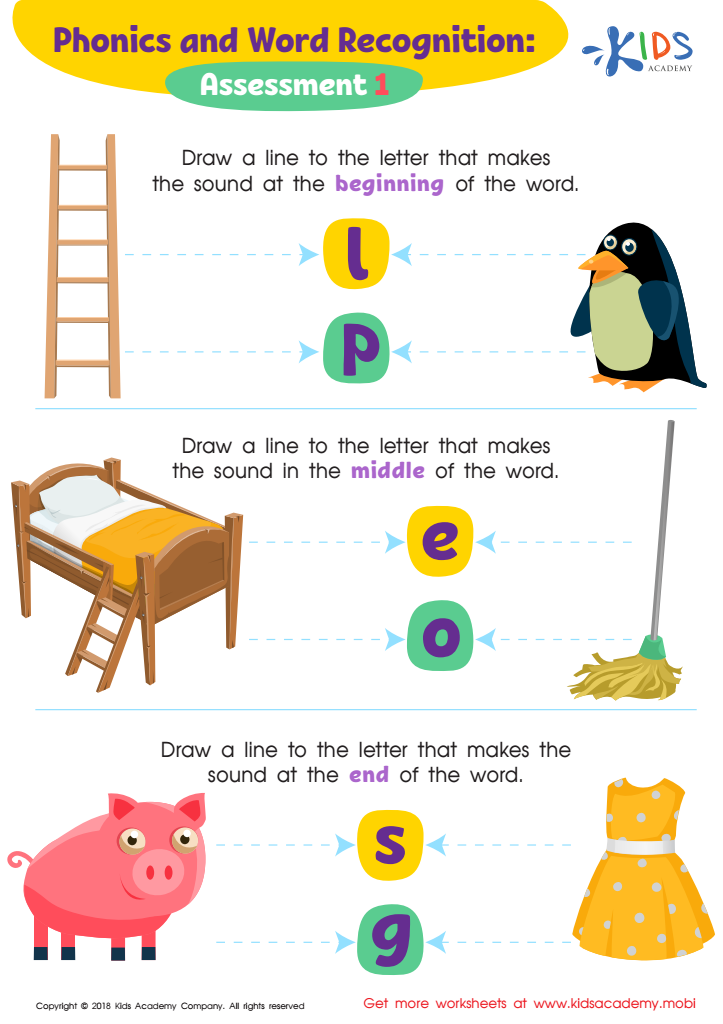

Phonics and Word Recognition: Assessment 1 ELA Worksheet
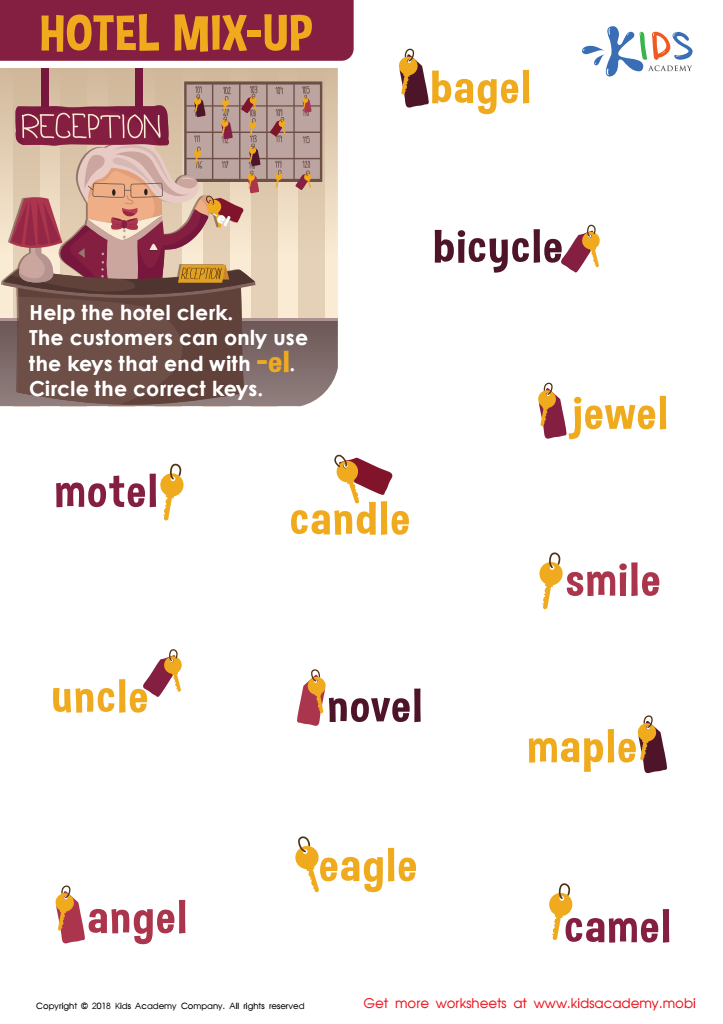

Hotel Mix-up Worksheet
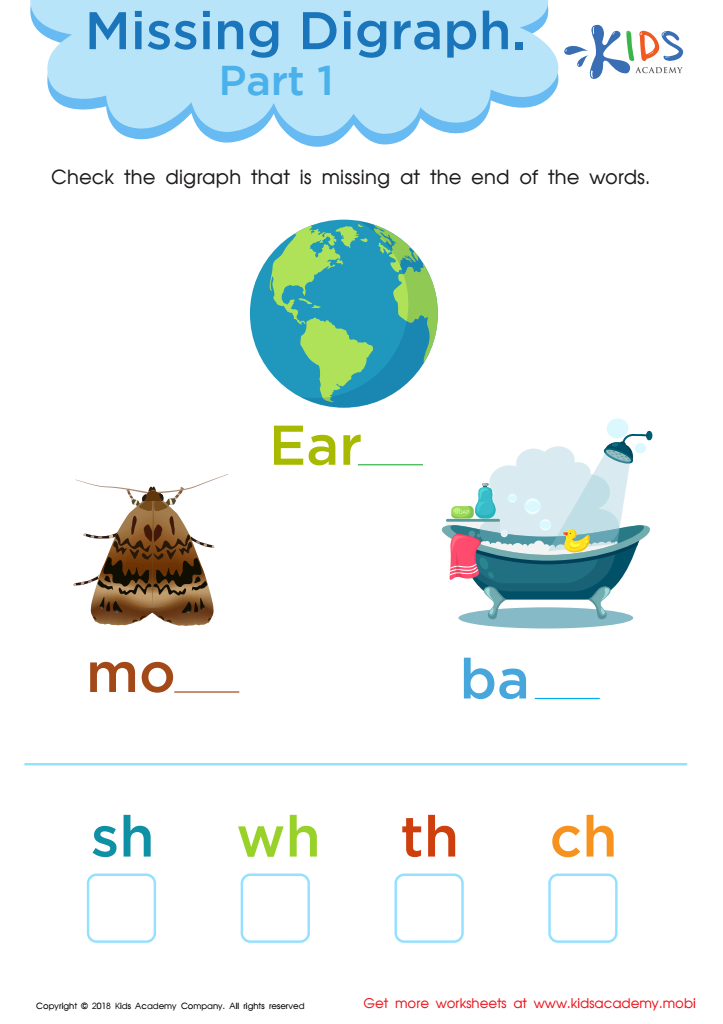

Missing Digraph: Part 1 Worksheet
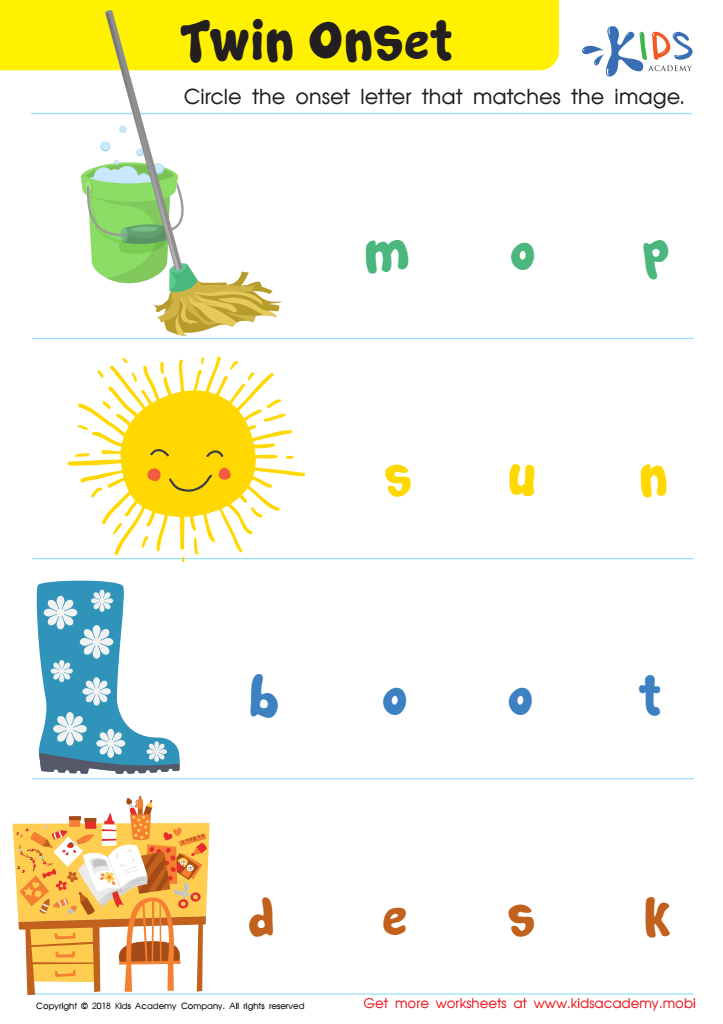

Twin Onset Worksheet
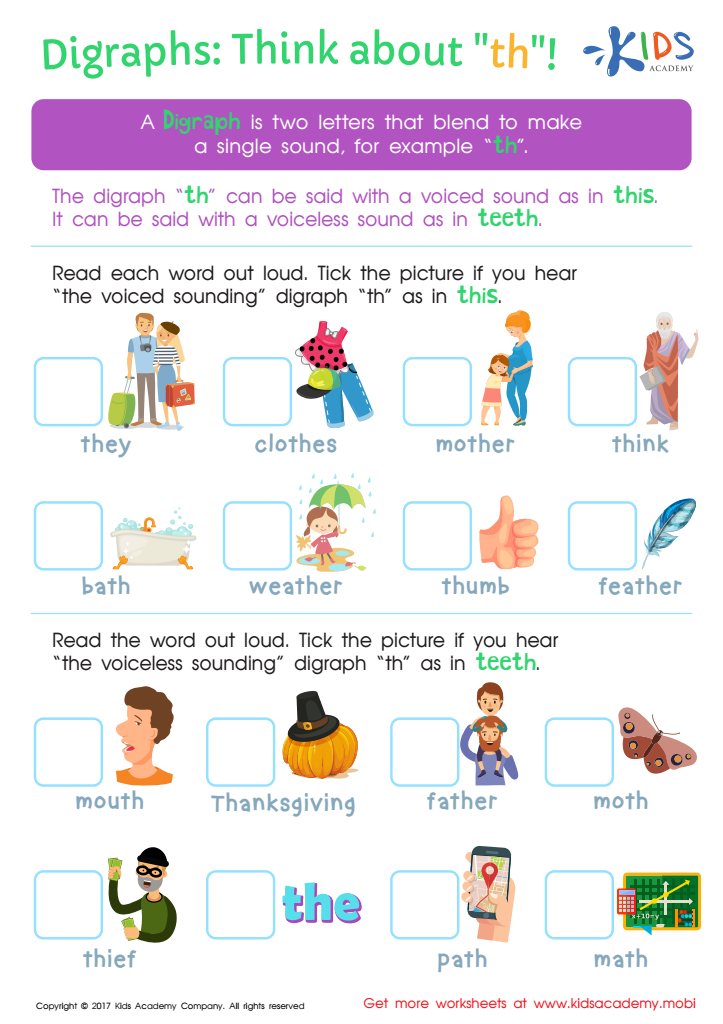

Digraphs: Think About "th" Worksheet
Understanding and mastering normal ending sounds, or final consonant sounds, in words is crucial for young children aged 3-9 as it lays a foundational block for various language and literacy skills. For parents and teachers, fostering this knowledge is vital for several reasons.
First, grasping ending sounds enhances phonemic awareness, which is the ability to recognize and manipulate the individual sounds in words. This skill is critical for decoding new words and is directly linked to successful reading acquisition. Children who struggle with phonemic awareness are often those who find reading challenging.
Second, being able to correctly identify and pronounce ending sounds aids in clearer speech articulation and communication. Incorrect pronunciation can lead to misunderstandings and hinder social interactions, which are essential for a child’s emotional and social development.
Third, decoding ending sounds reinforces children's spelling and writing abilities. Recognizing that "cat" ends with "-t" helps them when asked to transcribe oral words into written form, bolstering their overall literacy proficiency.
Finally, good phonemic skills, including recognition of ending sounds, contribute to effective listening and comprehension. When children can hear and process words correctly, they're better adept at understanding and engaging with stories, instructions, and interactions in the classroom.
In summary, ensuring that children aged 3-9 become proficient in recognizing normal ending sounds underpins their entire literacy framework, which subsequently supports their overall cognitive and social development.

 Assign to the classroom
Assign to the classroom




